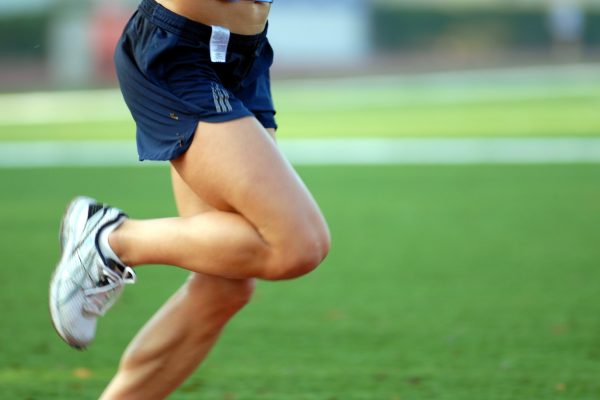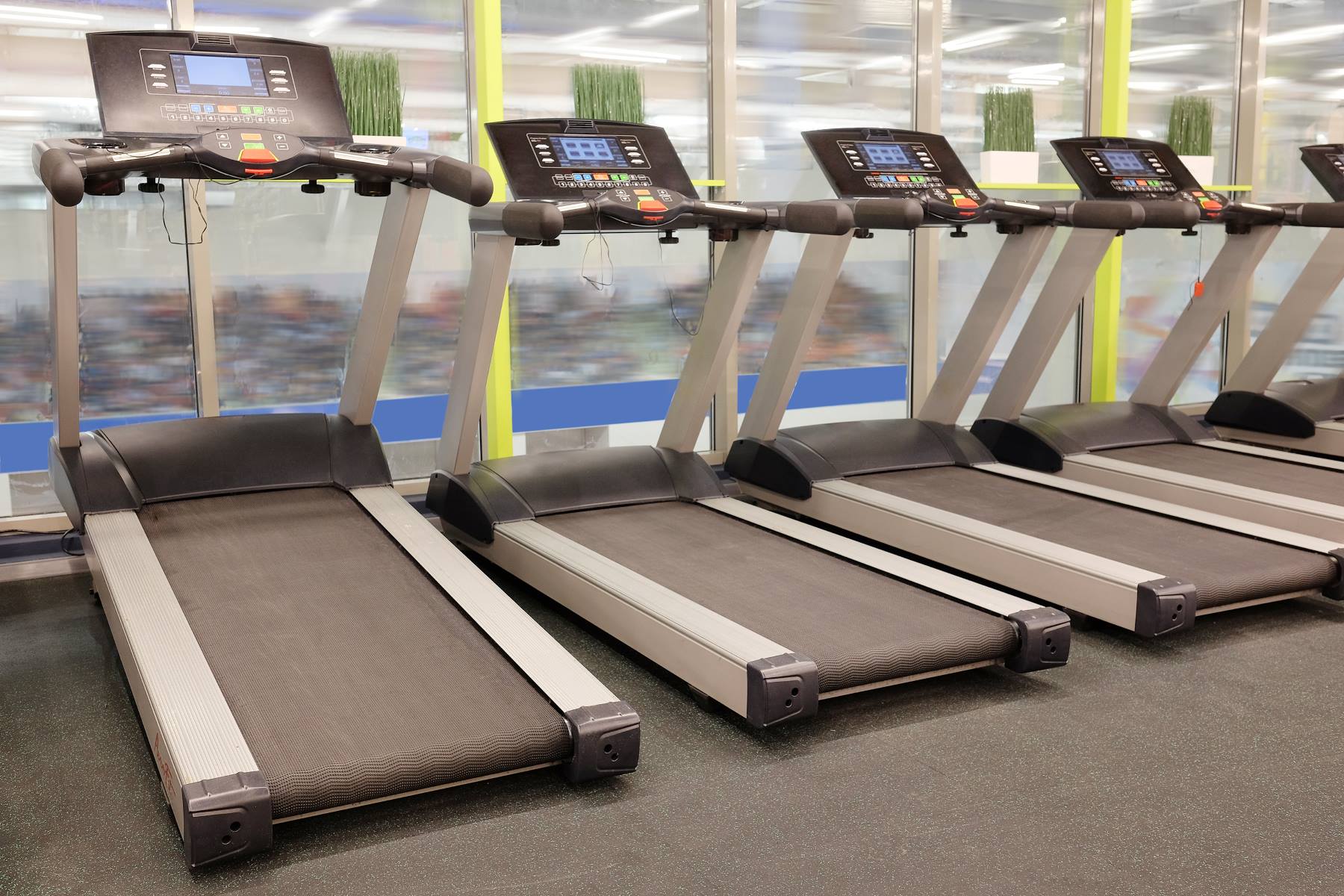

Featured
Why Do I Yawn When I Exercise
Modified: January 2, 2024
Learn the science behind why you yawn when exercising and how it affects your body. Discover how to optimize your workouts for maximum productivity. Featured article.
Introduction
Have you ever wondered why you find yourself yawning when you exercise? It’s a peculiar phenomenon that many people experience, yet not everyone understands the reasons behind it. Yawning during exercise can be puzzling and even frustrating, especially when it seems to hamper your ability to fully participate in physical activity. In this article, we will delve into the science behind yawning during exercise and explore the various factors that contribute to this unique response.
Yawning is a reflexive action characterized by involuntarily opening the mouth wide and taking a deep breath. It is commonly associated with tiredness or boredom, but interestingly, it can also occur during exercise. While it may seem counterintuitive, yawning during physical activity is actually quite common.
When you exercise, your body goes through a series of physiological changes to adapt to the increased demand for oxygen and energy. These changes include an increase in heart rate, blood flow, and respiration. Yawning during exercise is believed to be a result of these changes in the body’s respiratory system.
The primary purpose of yawning is to intake a large amount of oxygen and expel carbon dioxide. During exercise, your muscles require more oxygen to generate energy, and as a result, you breathe more vigorously to meet this demand. Yawning acts as a sort of “reset” mechanism for the respiratory system, allowing you to take in a deep breath and replenish your oxygen levels.
Furthermore, yawning is also thought to play a role in regulating body temperature. When you exercise, your body temperature rises due to increased metabolic activity. Yawning helps cool down the brain by drawing in cooler air through the mouth and nose, potentially aiding in maintaining optimal body temperature during physical exertion.
While yawning during exercise is a natural response, it can vary from person to person. Some individuals may experience more frequent yawning during strenuous activities, while others may hardly yawn at all. This discrepancy can be influenced by several factors, including individual differences in breathing patterns, fitness levels, and overall health.
Now that we have a basic understanding of the physiology behind yawning during exercise, let’s explore the various factors that can influence this phenomenon in more detail. By understanding these factors, you can better understand your own yawning patterns and potentially find ways to minimize yawning during physical activity.
The Physiology of Yawning
Yawning is a complex physiological process that involves multiple systems in the body, including the brain, respiratory system, and even the cardiovascular system. While the exact mechanisms behind yawning are not fully understood, researchers have made significant progress in uncovering some of the underlying factors.
One of the prevailing theories is that yawning helps to regulate the levels of oxygen and carbon dioxide in the body. When you yawn, you take in a deep breath, allowing fresh oxygen to enter your lungs. Simultaneously, the act of yawning helps expel carbon dioxide, which is a waste product of cellular respiration. This exchange of gases helps maintain the balance of oxygen and carbon dioxide in your bloodstream, ensuring that your body is supplied with adequate oxygen for its metabolic needs.
Yawning is also believed to be associated with changes in brain activity. Studies have shown that yawning is connected to the release of certain neurotransmitters, including dopamine, serotonin, and endorphins, which play a role in regulating mood and arousal. It is thought that yawning may help increase alertness and promote wakefulness, which can be particularly beneficial during periods of physical activity.
About half of all yawning episodes are thought to be contagious, meaning that seeing or hearing someone else yawn can trigger the urge to yawn in oneself. This phenomenon, known as contagious yawning, is believed to be linked to our innate ability to empathize with others. It is thought that contagious yawning may serve as a social bonding mechanism, helping to synchronize the behaviors and emotions of individuals within a group.
Interestingly, the act of yawning is not limited to humans. It is observed in many vertebrate species, including primates, dogs, and even fish. This suggests that yawning serves a fundamental biological purpose, potentially related to the regulation of physiological processes shared among different animals.
While yawning is a common and natural response, excessive yawning or yawning that is accompanied by other symptoms, such as fatigue or shortness of breath, may indicate an underlying health issue. It is important to consult with a medical professional if you experience persistent or concerning yawning patterns during exercise or at rest.
In the next section, we will explore the relationship between exercise and yawning in more detail. We will discuss why yawning tends to occur more frequently during physical activity and examine the various factors that can influence this response.
The Relationship Between Exercise and Yawning
It is a common observation that yawning tends to occur more frequently during exercise compared to sedentary activities. While the exact reasons for this phenomenon are not fully understood, there are several theories that shed light on the relationship between exercise and yawning.
One theory suggests that yawning during exercise is a response to increased fatigue. When you engage in physical activity, your muscles work harder and consume more energy. This increased demand for energy can lead to a buildup of waste products, such as lactic acid, in the muscles. Yawning may help eliminate these waste products and aid in muscle recovery, thus reducing fatigue during exercise.
Another theory proposes that yawning during exercise is a compensatory mechanism to regulate breathing. During intense physical exertion, your body requires more oxygen to meet the increased metabolic demands. Yawning can help facilitate deep inhalation, allowing you to take in more oxygen and improve respiration efficiency. This can be especially beneficial during activities that require sustained aerobic effort, such as running or cycling.
Additionally, the act of yawning during exercise may serve as a psychological and physiological response to stress. Exercise can induce physical and mental stress on the body, triggering the release of stress hormones like cortisol. Yawning has been shown to activate the vagus nerve, which is responsible for regulating the body’s stress response. By yawning, the body may be attempting to counterbalance the stress and promote a state of relaxation and equilibrium.
Furthermore, yawning can also be influenced by the social and environmental context of exercise. When exercising in a group or in a crowded gym, contagious yawning can occur. Seeing others yawn or hearing the sound of yawns can elicit a reflexive yawn in oneself. This social contagion of yawning may not only be influenced by physical exercise but also by the sense of camaraderie and shared experiences during group activities.
It’s important to note that not everyone experiences yawning during exercise, and the frequency and intensity of yawning can vary between individuals. Factors such as fitness level, overall health, and individual differences in respiratory patterns can influence one’s propensity to yawn during physical activity. Additionally, certain medical conditions or medications may increase the likelihood of yawning during exercise.
In the next section, we will explore the various factors that can influence yawning during exercise in more detail. Understanding these factors can help individuals manage and minimize excessive yawning, allowing for a more comfortable and focused workout experience.
Factors Influencing Yawning During Exercise
Several factors can influence the frequency and intensity of yawning during exercise. By understanding these factors, individuals can gain insights into their own yawning patterns and potentially find ways to minimize yawning during physical activity.
1. Fitness Level: Fitness level plays a significant role in yawning during exercise. Generally, individuals who are more physically fit may experience less frequent yawning due to their increased cardiovascular efficiency and enhanced oxygen utilization. Regular exercise can improve lung capacity and respiratory function, reducing the need for excessive yawning to enhance oxygen intake.
2. Breathing Patterns: The way you breathe during exercise can impact yawning. Shallow and inefficient breathing can trigger yawning as the body attempts to compensate for inadequate oxygen intake. Paying attention to your breathing technique, such as taking slow, deep breaths through the nose and exhaling fully, can help improve oxygenation and reduce the need for excessive yawning.
3. Environmental Conditions: The environment in which you exercise can also influence yawning. High temperatures, humidity, and poor air quality can increase the likelihood of yawning as the body tries to cool down and compensate for oxygen loss. Ensuring proper ventilation, using fans or air conditioning, and exercising in well-ventilated areas can help minimize yawning induced by environmental factors.
4. Medications and Medical Conditions: Certain medications, such as antihistamines and antidepressants, can induce drowsiness and increase the likelihood of yawning during exercise. Additionally, medical conditions like sleep disorders, allergies, or respiratory illnesses can impact respiratory function and contribute to excessive yawning. It is important to consult with a healthcare professional if you suspect that medication or an underlying condition is affecting your yawning patterns.
5. Psychological Factors: Psychological factors, such as stress, anxiety, or boredom, can influence yawning during exercise. Individuals who experience high levels of stress or anxiety may be more likely to yawn as a response to these emotional states. Engaging in stress-reduction techniques, such as meditation or listening to music, can help reduce psychological stress and potentially decrease yawning during physical activity.
It is important to note that while these factors can contribute to yawning during exercise, occasional yawning is a normal and natural part of the body’s respiratory response. Excessive or persistent yawning that is accompanied by other symptoms, such as dizziness or shortness of breath, may warrant further medical evaluation.
In the next section, we will explore the various theories that attempt to explain the underlying mechanisms behind yawning during exercise. Understanding these theories can provide further insights into this intriguing phenomenon.
Theories Explaining Yawning During Exercise
Yawning during exercise can be puzzling, and researchers have proposed several theories to explain this phenomenon. While no single theory can fully account for yawning during exercise, these explanations provide valuable insights into the underlying mechanisms of this intriguing behavior.
1. Increased Oxygen Intake: One theory suggests that yawning during exercise is a way for the body to increase oxygen intake. During physical activity, the muscles require more oxygen to produce energy. Yawning allows for a deep inhalation, helping to replenish oxygen levels and improve overall respiratory efficiency. By taking in more oxygen, the body is better equipped to meet the increased demands during exercise.
2. Cooling the Brain: Another theory proposes that yawning helps regulate brain temperature during exercise. When you engage in physical activity, body temperature rises due to metabolic processes. Yawning facilitates the intake of cooler air, which serves to cool down the brain. By regulating brain temperature, yawning may help maintain optimal cognitive function and prevent overheating during exercise.
3. Respiratory Reset: Yawning is thought to play a role in resetting the respiratory system. Engaging in vigorous exercise can alter breathing patterns, such as rapid or shallow breathing. Yawning acts as a reset button by facilitating a deep breath, helping to regulate the respiratory rate and ensure efficient gas exchange. This respiratory reset mechanism may help optimize oxygen delivery to the working muscles, allowing for better exercise performance.
4. Individual Variations: It is important to recognize that yawning during exercise can vary among individuals. Factors such as genetics, lung capacity, and respiratory muscle strength can contribute to individual differences in yawning patterns. Some individuals may naturally yawn more frequently during exercise, while others may not experience as much yawning. These variations highlight the complex interplay between genetics and physiological factors in yawning behaviors.
5. Neural Mechanisms: Yawning involves various neural pathways and neurotransmitters. Studies suggest that stimuli related to exercise, such as physical exertion or increased heart rate, can activate the brain regions associated with yawning. The release of neurotransmitters like dopamine, serotonin, and nitric oxide may play a role in triggering yawns during exercise. These neural mechanisms contribute to the coordination of physiological responses during physical activity.
While these theories provide valuable insights, it is important to note that yawning is a multifaceted behavior, and several factors likely contribute to its occurrence during exercise. The complexity of yawning makes it a fascinating area for further research and exploration.
In the next section, we will address some common misconceptions about yawning during exercise and provide insights into the importance of proper breathing techniques for optimizing physical performance.
Common Misconceptions About Yawning While Exercising
Yawning while exercising can be a perplexing experience, leading to various misconceptions about this phenomenon. Let’s address some common misconceptions and set the record straight:
1. Yawning Equals Laziness: One common misconception is that yawning during exercise is a sign of laziness or lack of effort. However, yawning is a natural physiological response that serves important functions in the body, such as enhancing oxygen intake and balancing brain temperature. Yawning during exercise does not necessarily indicate a lack of motivation or effort.
2. Yawning Indicates Boredom: Yawning is often associated with boredom or drowsiness, but this does not mean that yawning during exercise reflects a lack of interest or enjoyment. Yawning is a reflexive action that can occur due to various factors, including changes in respiratory patterns and the need for increased oxygen intake. It is not solely a reflection of mental or emotional state.
3. Yawning Decreases Energy Levels: Some people believe that yawning during exercise is a sign of decreased energy levels or fatigue. While excessive yawning can sometimes be a symptom of fatigue or lack of rest, occasional yawning during exercise is a natural response to boost oxygen levels and regulate the body’s physiological processes. Yawning can actually be a mechanism for reducing fatigue and enhancing performance.
4. Yawning Is Contagious Only Socially: Contagious yawning, the phenomenon where yawning spreads from one person to another, is often associated with social interactions. However, contagious yawning can also occur during physical activities, especially when exercising in groups or participating in team sports. It is not limited to social contexts but can be a reflexive response to visual or auditory cues.
5. Yawning Is Always a Cause for Concern: While excessive or persistent yawning can sometimes indicate an underlying medical condition, occasional yawning during exercise is generally not a cause for concern. It is a natural part of the body’s respiratory and physiological response to physical activity. However, if you experience extreme or disruptive yawning, accompanied by other concerning symptoms, it is advisable to consult a healthcare professional for a proper evaluation.
It is important to approach yawning during exercise with an understanding that it is a complex process influenced by various factors, including respiratory patterns, environmental conditions, and individual differences. Embracing this perspective can help dispel misconceptions and foster a more informed appreciation of yawning during physical activity.
In the next section, we will discuss the importance of proper breathing techniques during exercise and how they can help optimize performance and reduce yawning.
The Importance of Proper Breathing Techniques During Exercise
Proper breathing techniques play a crucial role in optimizing physical performance and reducing yawning during exercise. The way you breathe can impact oxygen uptake, respiratory efficiency, and overall exercise experience. Here are some reasons why proper breathing techniques are essential:
1. Enhanced Oxygenation: During exercise, the muscles require increased amounts of oxygen to generate energy. Proper breathing techniques, such as taking slow, deep breaths, ensure optimal oxygen intake. Deep inhalation allows more oxygen to reach the bloodstream, providing fuel to the working muscles and enhancing endurance and stamina.
2. Improved Respiratory Efficiency: Proper breathing techniques improve respiratory efficiency by engaging the diaphragm, a crucial muscle responsible for respiration. Deep diaphragmatic breathing promotes full expansion of the lungs, maximizing the exchange of oxygen and carbon dioxide. This enhances the removal of waste products and reduces the need for excessive yawning to compensate for inadequate gas exchange.
3. Stress Reduction: Conscious breathing techniques, like abdominal breathing or paced breathing, activate the parasympathetic nervous system, which promotes relaxation and reduces stress. By managing stress levels, proper breathing techniques can help control the release of stress hormones, such as cortisol, and reduce the likelihood of stress-induced yawning during exercise.
4. Enhanced Focus and Mind-Body Connection: When you focus on your breath during exercise, you establish a stronger mind-body connection. Conscious breathing brings awareness to the present moment and helps you maintain mindfulness while engaging in physical activity. This can enhance concentration and improve your overall exercise performance.
5. Reduced Fatigue: Proper breathing techniques assist in efficient energy utilization, reducing unnecessary muscular effort and minimizing fatigue. By optimizing oxygen delivery to the muscles, correct breathing patterns contribute to better endurance and reduced muscle fatigue during exercise. A decrease in fatigue can lead to a decrease in the likelihood of yawning during physical activity.
To practice proper breathing techniques during exercise, focus on taking slow, deep breaths through your nose. Inhale deeply, allowing the air to fill your abdomen and expand your chest. Exhale fully, emptying your lungs completely before each new breath. Maintaining a steady and controlled breathing rhythm can optimize oxygenation and respiratory efficiency.
Remember that learning proper breathing techniques may require practice and conscious effort. Breathing exercises, such as diaphragmatic breathing or yoga-based techniques like pranayama, can be beneficial in developing good breathing habits during exercise.
By incorporating proper breathing techniques into your exercise routine, you can optimize your performance, reduce yawning, and experience a more enjoyable and productive workout session.
In the next section, we will provide some useful tips to help reduce yawning during physical activity and enable you to make the most of your exercise sessions.
Tips to Reduce Yawning During Physical Activity
Excessive yawning during physical activity can be distracting and hinder your overall exercise experience. While occasional yawning is normal, if you find yourself yawning excessively, here are some helpful tips to reduce yawning during physical activity:
1. Focus on Breathing: Pay attention to your breathing technique during exercise. Practice slow, deep breaths through your nose, allowing the air to fully reach your abdomen and expand your chest. This can help optimize oxygen intake and minimize the need for excessive yawning to compensate for inadequate respiration.
2. Stay Hydrated: Dehydration can contribute to increased fatigue and yawning during exercise. Ensure you drink enough water before, during, and after your workout to stay properly hydrated. Proper hydration helps maintain optimal physiological function and can reduce the likelihood of excessive yawning.
3. Gradually Warm Up: Incorporate a proper warm-up routine before engaging in intense exercise. Gradual warm-up exercises increase blood flow, raise body temperature, and prepare your respiratory system for the upcoming physical activity. A well-prepared respiratory system is less likely to induce excessive yawning during exercise.
4. Optimize Environmental Conditions: Exercise in well-ventilated areas with good air quality. Poor air circulation, high temperatures, or high humidity can contribute to increased yawning as the body tries to cool down or compensate for oxygen loss. Ensure that your exercise environment is comfortable and conducive to optimal respiratory function.
5. Maintain a Healthy Lifestyle: Leading a healthy lifestyle can contribute to a reduction in excessive yawning during physical activity. Get enough quality sleep, manage stress levels, and maintain a balanced diet. Prioritizing overall health and well-being can positively impact your exercise performance and minimize yawning episodes.
6. Vary Your Workout Routine: Monotonous and repetitive exercises can sometimes lead to increased yawning. To keep your mind and body engaged, vary your workout routine by incorporating different types of exercises, intensity levels, and activities. This can help reduce the likelihood of excessive yawning due to boredom or predictability.
7. Focus on Mental Engagement: Engage your mind during exercise by setting goals, visualizing success, or listening to motivating music or podcasts. A mentally stimulating exercise session can help divert your attention from yawning and keep you focused and energized throughout your workout.
8. Consult a Healthcare Professional: If excessive yawning persists despite incorporating these tips, it may be beneficial to consult a healthcare professional. They can evaluate your yawning patterns, perform any necessary tests, and determine if there are underlying medical conditions contributing to the excessive yawning.
Remember that occasional yawning during exercise is a normal physiological response. However, excessive and persistent yawning may warrant further investigation to address any underlying issues.
By implementing these tips, you can minimize excessive yawning and optimize your exercise experience, allowing you to fully enjoy the numerous benefits of physical activity.
Now that we have explored the factors, theories, and tips related to yawning during exercise, let’s recap the key points and consider the significance of proper breathing techniques and awareness in maximizing our physical performance.
Conclusion
Yawning during exercise can be a curious and sometimes frustrating phenomenon, but it is a natural response with underlying physiological and psychological mechanisms. Understanding the factors influencing yawning, such as fitness level, breathing patterns, and environmental conditions, can help individuals manage and reduce excessive yawning during physical activity.
Proper breathing techniques play a crucial role in optimizing physical performance and minimizing yawning. Deep, slow breathing through the nose, along with maintaining hydration and a healthy lifestyle, can enhance oxygen intake, improve respiratory efficiency, and reduce the need for excessive yawning during exercise.
Various theories attempt to explain yawning during exercise, including increased oxygen intake, cooling the brain, respiratory reset, and neural mechanisms. While these theories provide valuable insights, yawning during exercise is a complex phenomenon influenced by multiple factors and individual variations.
It is important to debunk common misconceptions surrounding yawning during exercise, such as associating it with laziness or boredom. Yawning is a natural response that serves important physiological functions, and occasional yawning during physical activity is normal and expected.
By implementing the tips provided, such as focusing on breathing, optimizing environmental conditions, and varying your workout routine, you can minimize excessive yawning and enhance your exercise experience. However, if excessive yawning persists or is accompanied by other concerning symptoms, it is advisable to seek medical advice.
In conclusion, yawning during exercise is a multifaceted phenomenon influenced by various factors, including respiratory demands, fitness level, and environmental conditions. Proper breathing techniques, awareness, and lifestyle choices can help reduce excessive yawning and optimize physical performance. Embracing a mindful approach to breathing during exercise can enhance oxygen uptake, respiratory efficiency, and overall well-being, allowing you to fully enjoy the benefits of a fulfilling and energizing workout.









